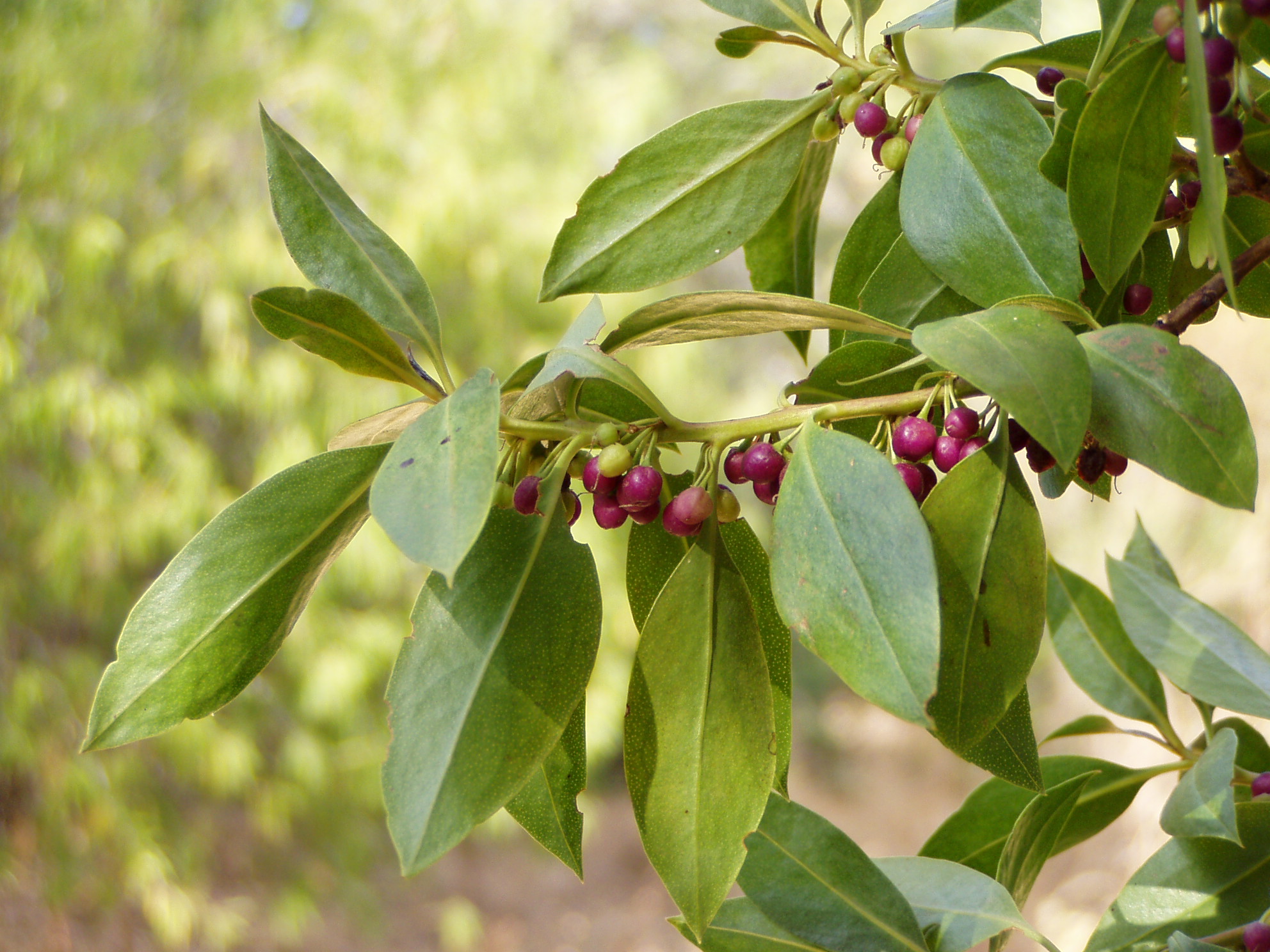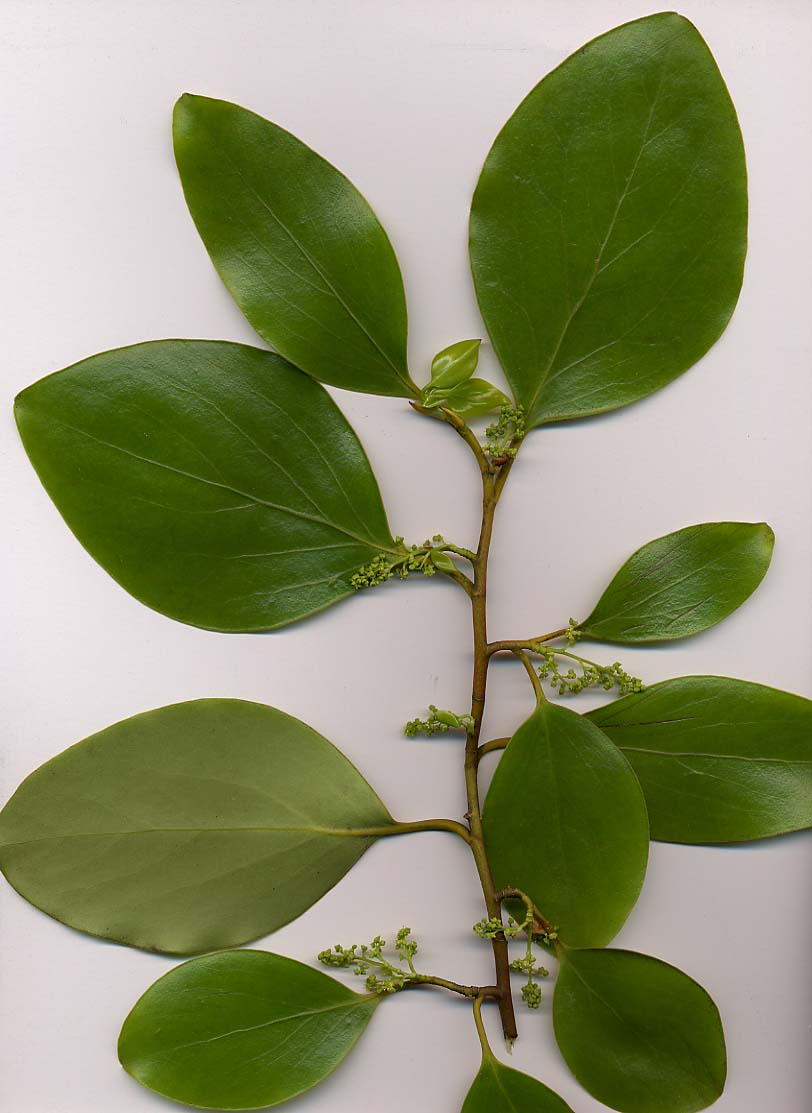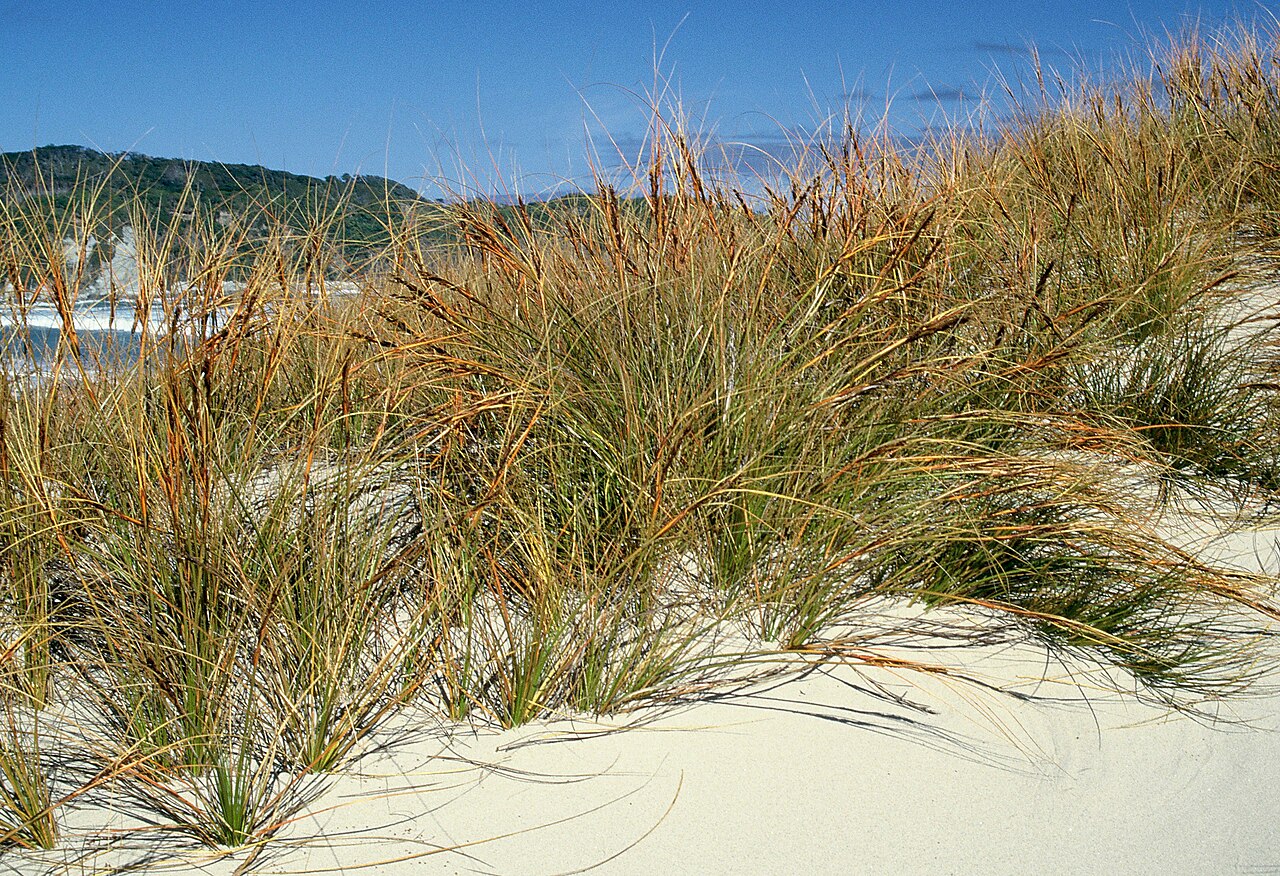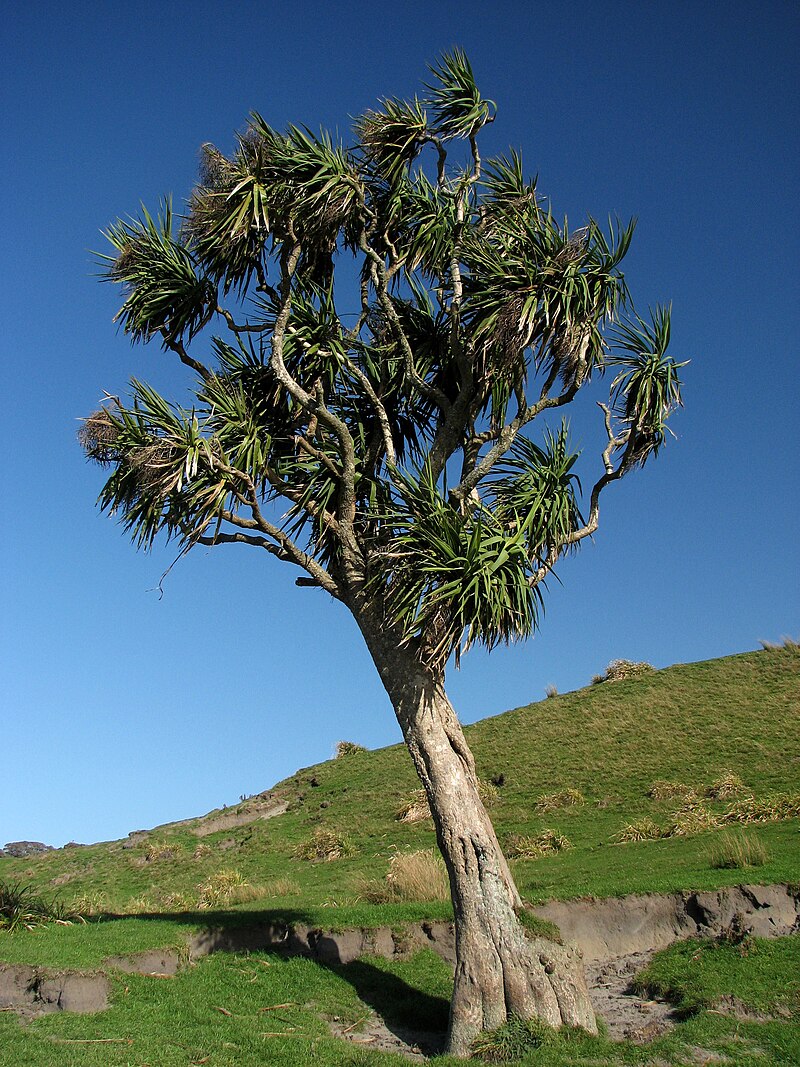Ngaio
Myoporum laetum
Ngaio is a fast-growing coastal tree native to New Zealand, valued for its glossy leaves, white flowers, and excellent shelter properties. This versatile plant is particularly well-suited to coastal conditions and makes an excellent hedge or shelter tree. Its dense foliage provides important habitat for native birds and insects.

Ngaio (Myoporum laetum) displaying its characteristic white flowers and glossy foliage. Image by Phil Bendle [CC BY-NC-ND 3.0], via Wikipedia
Quick Facts
| Height | 3-10 meters |
|---|---|
| Spread | 3-6 meters |
| Growth Rate | Fast |
| Lifespan | Long-lived |
| Flowering | Spring to Summer |
| Flower Color | White with purple spots |
Climate Best Suited To
Ngaio (Myoporum laetum) is particularly well-suited to coastal environments where it tolerates salt spray, wind, and sandy soils. It grows best in mild climates with minimal frost.
| City | Climate Suitability |
|---|---|
| Whangārei | Ideal |
| Auckland | Ideal |
| Hamilton | Good |
| Tauranga | Ideal |
| Rotorua | Moderate |
| Gisborne | Ideal |
| New Plymouth | Ideal |
| Napier | Ideal |
| Whanganui | Ideal |
| Palmerston North | Good |
| Wellington | Ideal |
| Nelson | Ideal |
| Christchurch | Good |
| Dunedin | Moderate |
| Invercargill | Challenging |
Growing Requirements
Soil
- Well-draining soil
- Tolerates most soil types
- pH 5.5-7.5
Light
- Full sun to partial shade
- Best growth in full sun
- Tolerates coastal exposure
Water
- Moderate water needs
- Drought tolerant once established
- Good drainage essential
Uses & Significance
Garden Uses
- Hedging and screening
- Coastal gardens
- Shelter belts
- Bird-attracting gardens
- Large containers
Traditional Uses
- Medicinal applications
- Insect repellent
- Shelter plantings
Seasonal Care Calendar
Spring
- Apply slow-release fertilizer if needed
- Mulch around base to retain moisture
- Ideal planting time for new ngaio
- Begin regular watering of young plants
Summer
- Water deeply during dry periods
- Watch for insect pests like scale
- Trim lightly to maintain shape
- Provide shade for newly planted specimens
Autumn
- Another good time for planting
- Reduce watering as temperatures drop
- Apply mulch before winter
- Clean up fallen leaves if desired
Winter
- Minimal water needed
- Protect young plants from hard frosts
- Major pruning can be done during dormancy
- Check for wind damage after storms
When to Prune and How Much
Ngaio responds well to pruning and can be maintained as a hedge or shaped specimen:
- Prune in late winter or early spring for major reshaping
- Regular light trimming through growing season keeps hedge forms tidy
- Can be cut back hard if overgrown - will resprout from old wood
- Remove dead or damaged branches anytime
- Wear gloves when pruning as sap can irritate skin
Planting Guide
When to Plant
Plant ngaio in spring or autumn when soil is warm and moist.
Planting Steps
- Choose a site with well-draining soil and full sun to partial shade
- Space plants 1-2m apart for hedging, 3-4m for specimen trees
- Dig a hole twice as wide and the same depth as the root ball
- Add compost to poor soils if needed
- Position the plant at the same level as it was in the container
- Backfill and firm gently around the roots
- Water thoroughly and apply mulch
Note: All parts of ngaio are poisonous if ingested - take care when planting where children and pets play.
Propagation Methods
From Seed
Seed propagation is straightforward:
- Collect ripe purple berries in autumn
- Extract seeds and clean off pulp
- Sow in seed-raising mix
- Keep moist but not wet
- Germination usually occurs within 4-6 weeks
From Cuttings
Semi-hardwood cuttings can be taken in summer:
- Take 10-15cm cuttings with a heel of older wood
- Remove lower leaves and dip in rooting hormone
- Place in propagating mix with good drainage
- Keep moist and in bright, indirect light
- Roots typically develop within 6-8 weeks
Cultural History
Ngaio has significance in Māori culture and early European settlement:
- Used traditionally by Māori for medicinal purposes
- Leaves crushed and used as an insect repellent
- Valued by early settlers for its fast growth and wind resistance
- Important component of coastal restoration projects
- Scientific name "laetum" means bright or cheerful, referring to its appearance
Pests & Diseases
Common Pests
- Scale insects - treat with horticultural oil
- Thrips - can cause leaf distortion, treat with insecticidal soap
- Mealybugs - occasionally affect new growth
Diseases
- Root rot in poorly drained soils
- Leaf spot fungal diseases in very humid conditions
- Generally disease resistant when grown in appropriate conditions
Bonus Tip
For the most attractive form, plant ngaio where it has space to develop its natural rounded shape rather than heavy pruning. In coastal gardens, position it as a windbreak to protect more sensitive plants - its ability to filter salt-laden winds creates a microclimate suitable for plants that wouldn't otherwise survive near the sea.



